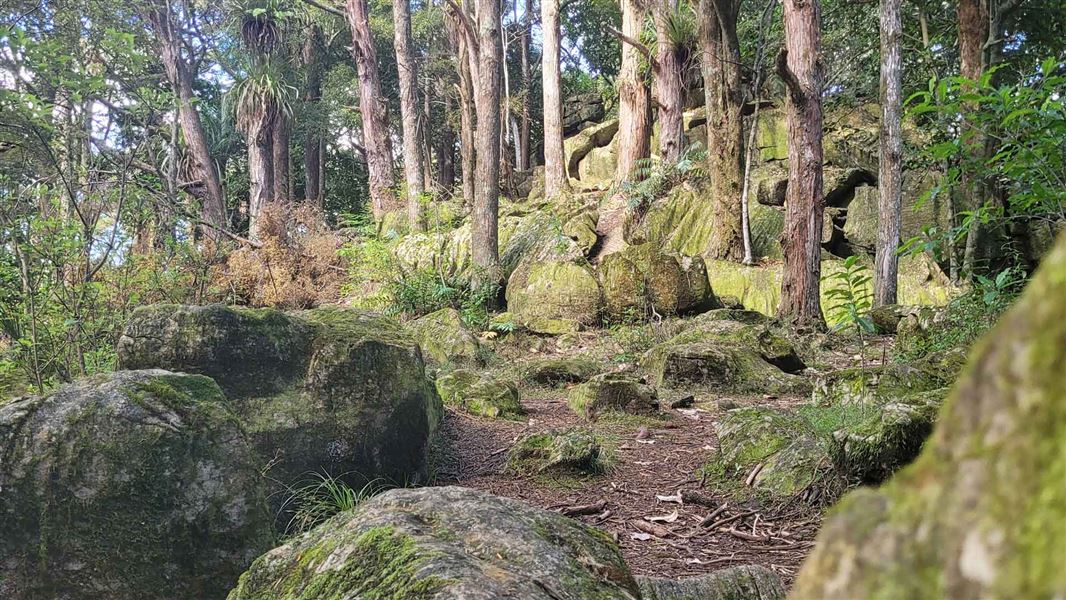2 km one way
The track starts at the Whangarei District Council reserve, by the cave's entrance, off Waipū Caves Road. There is a large flat area suitable for picnics and a Whangārei District Council administered public toilet at this point.
Note: this track does not lead to Waipū Caves. The entrance to the caves is directly across the Council Reserve before the track starts.
Look across the large flat grassed area for the orange post, which indicates the start of the track. Cross the large concrete culvert and start climbing your way out of the Waipū Caves valley.
The track passes through the Waipū Caves Scenic Reserve; after meandering among karst limestone formations it climbs up steeply, across areas of open grass and regenerating bush, before ending at a gate through to private farmland.
The track ends on the ridgeline where you will be rewarded with panoramic views right across the Whangārei Harbour to Bream Head and out to the Hen and Chicken Islands.
You must return back the same way.
The Waipū Caves track is located off State Highway One, on Waipū Caves Road, south of Whangārei near Waipū. To reach Waipū Caves Road from SH1 take either Shoemaker Road, from Waipū or Springfield Road from the north.
- The caves can be prone to flash flooding - check the weather forecast before you visit.
- Bring a torch and wear suitable footwear. The caves are wet and slippery inside.
- The inner cave area is suitable for experienced cavers only.
- Sinkholes are a common feature of karst landscapes.
- Stay on the track and closely supervise small children.
- Although classed as a Walking Track, the track is not always well formed.
- The track is wet, muddy and slippery at times.
- It is suitable for people of most ages and fitness levels.
The Waipū Caves area features a karst / limestone landscape and weathered rocks. The term "karst" refers to a type of topography that is formed over limestone, dolomite or gypsum by solution of the rock and is characterised by closed depressions or sinkholes, caves and underground drainage.
The natural heritage values of karst areas are high as karst surface landforms provide a variety of habitats for plant species that are restricted to or favour growing on calcareous soils. They also provide refuges for species that were once more widely spread throughout the landscape. Caves provide habitats or shelter for a range of animal species with varying degrees of reliance on or adaptation to dark, cool, moist conditions with low daily variability.
Karst landscapes are of particular significance to Maori, which is enshrined in the tikanga and kawa (sacred customs and ceremonies) of those with the whakapapa to talk about them. Karst areas are important sites for geological, geomorphological, palaeontological, and climatological studies.
Bones of bats, birds, amphibians, and reptiles are commonly found in caves. Some caves also contain remains of fossil invertebrates, often of previously unknown or locally extinct species.
Stop kauri disease and protect kauri
- Scrub all soil off shoes and gear.
- Use cleaning stations.
- Always stay on the track.
DOC Customer Service Centre
| Phone: | 0800 275 362 |
| Email: | whangarei@doc.govt.nz |
| Address: | Whangārei Office |
